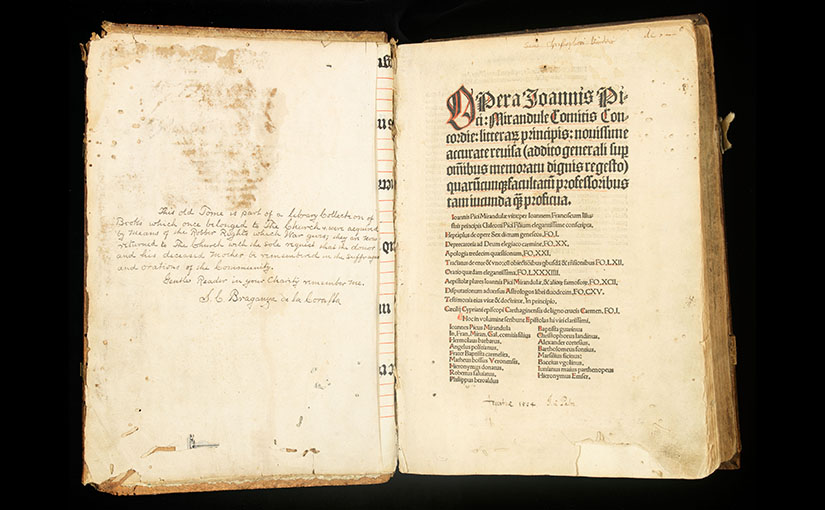by Sue Donovan, Rare Books Conservator
The conservation lab, a unit within Hesburgh Libraries Preservation, has been part of a collaborative effort to determine if a book owned by the University since 1916 was bound in human skin. The book, a volume of the works of Giovanni Pico della Mirandola, a 15th-century humanist writer, contains newspaper clippings and handwritten affidavits attesting to the book’s past. These documents purport that the book was owned by Christopher Columbus and was bound in the skin of a Moorish chieftain, which had been obtained after the conversion of the Muslim population of Granada to Catholicism by the zealous Cardinal Cisneros in 1500. After contradictions were found in the provenance records, the conservation lab engaged in identifying the nature of the skin used for the binding.

In January of 2015 two samples were taken—one from the purported human skin binding and one as a control from a book with a similar binding and of the same time period and country of production as the Pico volume. Finding an area that was relatively untouched was important so that there would be no contamination from proteins and grime from centuries of handling and consultation. Accordingly, small samples were taken from underneath the paper pastedowns of each book, and they were sent to the New York City Office of the Chief Medical Examiner (OCME), where they were analyzed through protein mass spectrometry. Proteins are more stable than DNA, and because of the unique patterns and mutations that exist across species, they can be used to determine whether a binding has been made with pig, sheep, calfskin, or human skin.
In the meantime, Conservator Liz Dube and I took the volume to the photo macroscopy lab on campus to see if we could determine any information about the origin of the skin through the pore and follicle patterns, but we left just as perplexed—perhaps even more so!—than when we arrived.
Based upon in-house tests, it was uncertain whether the Pico book was bound in human skin. We turned next to our outside collaborators for their expertise. To find out what they uncovered, read John Nagy’s article, “The Truth Uncovered,” in the Spring 2016 issue of Notre Dame Magazine.
Thanks to George Rugg for his research on the provenance of the Pico volume, Donald Siegle of the NYC OCME for his correspondence regarding protein mass spectrometry, and John Nagy for his research into the personalities behind this book’s ownership and for bringing the information together in his article.
 This work is licensed under a Creative Commons Attribution 4.0 International License.
This work is licensed under a Creative Commons Attribution 4.0 International License.
